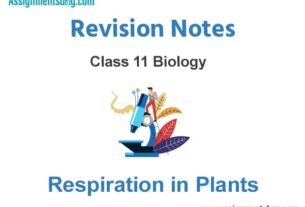Please refer to the Thermodynamics Revision Notes given below. These revision notes have been designed as per the latest NCERT, CBSE and KVS books issued for the current academic year. Students will be able to understand the entire chapter in your class 11th Physics book. We have provided chapter wise Notes for Class 11 Physics as per the latest examination pattern.
Revision Notes Chapter 12 Thermodynamics
Students of Class 11 Physics will be able to revise the entire chapter and also learn all important concepts based on the topic wise notes given below. Our best teachers for Grade 11 have prepared these to help you get better marks in upcoming examinations. These revision notes cover all important topics given in this chapter.
• Thermal Equilibrium:- Two systems are said to be in thermal equilibrium with each other if they have the same temperature.
• Thermo dynamical system:- An assembly of large numbers of particles having same temperature, pressure etc is called thermo dynamical system.
• Thermodynamic variables :- The variables which determine the thermodynamic behavior of a system are called thermodynamic variables
• Zeroth law of Thermodynamics :- IT states that if two system A and B are in thermal equilibrium with a third system C , then the two system A and B are also in thermal equilibrium with each other.
• Thermodynamic Process :- A thermodynamic process is said to be taking place , if the thermodynamic variable of the system change with time.
• Types of thermodynamic Process:-
(1) Isothermal process – process taking place at constant temperature.
(2) Adiabatic process – process where there is no exchange of heat.
(3) Isochoric process – process taking place at constant volume
(4) Isobaric process –Process taking place at constant Pressure.
(5) Cyclic process:- Process where the system returns to its original state.
• Equation of state : A relation between pressure, volume and temperature for a system is called its equation of state .
• Indicator diagram (P-V diagram) :- The graphical representation of the state of a system with the help of two thermodynamical variables is called indicator diagram of the system.
• Internal energy of a gas :- It is the sum of kinetic energy and the intermolecular potential energy of the molecules of the gas. Internal energy is a function of temperature.
• First law of Thermodynamics :- It states that if an amount of heat dQ I added to a system , a part of heat is used in increasing its internal energy
while the remaining part of heat may be used up as the external work done dW by the system.
Mathematically dQ=dU+dW
dQ=dU+ PdV
• Work done during expansion / compression of gas:- When the volume of gas changes from V1 to V2 , the work done is given by W= V1∮V2= Area under the P -V diagram.
• Thermodynamical operations are
(1) Isothermal process : A thermodynamic process that takes place at constant temperature is called an isothermal process.
– Equation of state for isothermal process : PV = constant.
– Work done during an isothermal process
Wiso = RT loge V2/V1 = 2.303 RT loge V2/V1
(2) Adiabatic process : A thermodynamic process that takes place in such a manner that no heat enters or leaves the system is called adiabatic process
→ Equation of state for adiabatic process
(i) PVγ = constant (ii) TV γ-1 =constant (iii)

• Reversible process :- It is a process in which the system can be retraced to its original state by reversing the condiditions.
• Irreversible process:- It is a process in which the system cannot be retraced to its original state by reversing the conditions.
• Second law of thermodynamics:
→ Kelvin’s statement of second law – It is impossible to derive a continous supply of work by cooling a body to a temperature lower than that of the coldest of its surrounding.
→ Clausius statement of second law – It is impossible for a self –acting machine unaided by any external agency to transfer heat from a body to another body at higher temperature.
• Heat Engine – a heat engine is a device for converting heat energy continuously into a mechanical work.
→ Component of heat engine- (i) source of heat (ii) Sink (iii) Working substance
• Efficiency of heat Engine :-It is defined as the ratio of the external work obtained to the amount of heat energy absorbed from the heat source. Mathematically

• Carnot’s heat Engine :- it is an ideal heat Engine which is based on carnot’s reversible cycle.
Efficiency of carnot’s heat Engine

• Refrigerator or Heat pump:- it is heat engine working backward.
• Co-efficient of performance : It is the ratio of heat absorbed from cold body to the work done by the refrigerator.


